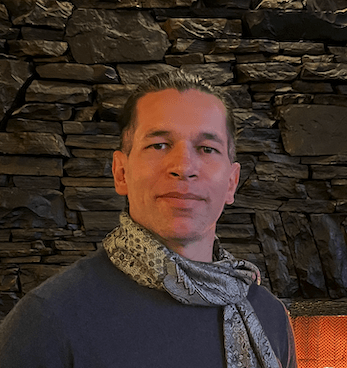
Mind-body connection describes how your thoughts, feelings, and emotions directly influence your physical health, affecting symptoms like pain and stress through measurable changes in hormone levels and immune response.
Ever wonder how the things buzzing in your head can actually affect your body? Mind-body connection isn’t just a fancy phrase — it’s a powerful reality we live every day. I think this part is so powerful because recognizing how emotions and thoughts can create real physical effects could totally change how you approach health and healing. In this post, I’ll share insights and stories that might just help you see your own health journey in a new, hopeful light.
Understanding the mind-body link and how thoughts influence physical health
Have you ever noticed how a bad day can make your stomach churn or your shoulders tense? That’s your mind-body connection at work — your thoughts and feelings can literally shape how your body feels. It’s kind of like your brain and body have this constant chat going on, sharing messages back and forth.
Think about stress as a sneaky little gremlin that triggers your body’s fight-or-flight response. This causes things like increased heart rate, headaches, or even muscle pain.
Here’s a quick breakdown:
- Negative thoughts can lead to real physical symptoms like tension or fatigue.
- Positive mindset helps reduce stress hormones, improving your overall health.
- The brain sends signals that influence immune functions and inflammation.
Honestly, it’s almost like your mind is giving your body a bubble bath when you focus on calm and positivity — soothing those aches and calming your nervous system.
Studies in the U.S. have shown that mindfulness and relaxation techniques can reduce cortisol levels by nearly 20%, helping you bounce back faster from physical strains.
So, next time you feel tense, try tuning into your thoughts. Could changing your mindset shift your body’s response? It’s a little thing with big potential, right?
Remember, every thought is a message. What message are you sending your body today?
Exploring emotional causes behind physical symptoms and pain
You know how sometimes the pain in your body doesn’t seem to have a clear cause? Well, emotions might be playing a bigger role than you think. It’s like your feelings get bottled up and show up as aches or discomfort.
Imagine stress or sadness as invisible weights you carry around—over time, those weights can strain muscles or cause headaches.
Here’s what to watch for:
- Chronic pain with no clear medical source
- Symptoms that get worse during emotional stress
- Muscle tension, especially in the neck, shoulders, or jaw
Interestingly, studies show that up to 60% of chronic pain patients in the U.S. have emotional stress as a significant factor. Heck, that’s a lot, right?
I thought—wait, maybe not everything that hurts needs a pill. Sometimes, understanding your emotions can be the first step to relief.
Try this: when you notice pain, pause and ask yourself what you’re feeling. Anxiety? Frustration? Recognizing these can give clues about the root cause.
The body and mind are like dance partners; if one leads, the other follows. So addressing emotional health can ease physical symptoms.
Applying the Louise Hay Method for holistic healing and mindset shifts
Ever heard of the Louise Hay Method? It’s a self-help approach that links your thoughts to your physical health. The core idea is that changing your mindset can spark real healing in your body.
It’s kind of like journaling, but with affirmations — positive statements that help reprogram negative thought patterns.
Here’s how you can try it:
- Identify a physical issue or recurring symptom you want to address.
- Write down any negative beliefs or emotions tied to it—maybe feelings of unworthiness or fear.
- Create a positive affirmation that challenges those beliefs, like “I am worthy of health and happiness.”
- Say your affirmations aloud every day, ideally in front of a mirror—it helps solidify the mindset shift.
Studies show that positive affirmations can reduce stress and improve your body’s response to pain by lowering stress hormones, like cortisol.
Honestly, it’s like giving your brain a bubble bath—cleaning out negative clutter and inviting calm.
The key? Consistency. Mindset shifts don’t happen overnight, but steady practice builds a real foundation for healing.
Why not give it a shot? Changing your internal dialogue might just be the gentle nudge your body needs.
Wrapping up
The mind-body connection shows us how much our thoughts and feelings can affect our physical health. It’s clear that emotions sometimes speak through our bodies in the form of pain or tension, right?
By exploring methods like the Louise Hay approach, you can start gently shifting how you think and feel about your health. Remember, small daily changes in mindset are often the most powerful.
Hey, it’s okay to take things slow and just pause for a moment each day to check in with yourself. What’s one positive thought you can carry with you right now?
FAQ — your questions about mind-body connection answered
What is the mind-body connection?
It’s the way your thoughts and feelings can influence your physical health and symptoms.
How can emotions cause physical pain?
Emotions like stress or anxiety can trigger muscle tension or headaches, showing in your body.
Can positive thinking really improve health?
Yes, positive affirmations and mindset shifts can reduce stress hormones and support healing over time.
Is the Louise Hay Method easy to try at home?
Absolutely. It involves simple daily affirmations to help change negative thought patterns.
Should I talk to a doctor about unexplained pain?
Definitely. It’s important to rule out medical causes while also exploring emotional factors.
How long does it take to see results from mindset shifts?
Results vary, but consistent practice over weeks can gradually improve your emotional and physical well-being.

A certified Heal Your Life® Coach with 20+ years in education and emotional development. Supports gifted teens in navigating anxiety, perfectionism, and identity challenges, while equipping parents with practical tools for lasting transformation. Sessions blend emotional healing, mindset mastery, and strategic empowerment.



